How AI and Bots Will Address the Need for Speed in 2022
Now more than ever, time compression is everywhere. Popular online “speed-to-serve” masters such as Amazon and Uber have conditioned us that we should never have to wait. Today, speed is a critical customer experience issue.
Responding to a lead must be done in seconds or minutes and you should highly accelerate the Service Level Agreement (SLA) completion time. Replying to customer support questions must be fulfilled at unprecedented speed to prevent wait times that evolve into poor reviews.
Organizational models and technologies need to evolve to increase speed-to-serve expectations. Sales, marketing, and service need to operate as one team, with hand-offs in seconds and back-and-forth responses in minutes. Data must be shared, and data-driven processes, priorities, next steps, and outlooks automated via AI.
Bots will become the front line for “hyper-convenient” engagement as a first step before getting routed to a human in sales, marketing, and service. Bots will handle tedious tasks and increasingly offload significant amounts of manual, repetitive work, freeing humans to focus on more inspired, value-added work while meeting the need for speed in 2022.
2022: The Year AI Breaks Through the “Human Trust” Barrier
Marketers don’t trust AI yet—2022 is the year that they will.
Companies are still cautious about relying on AI to analyze and automate business processes, so they work in a “dual-mode” of people and AI until they feel confident in the AI skills. 2022 is the year when AI will prove its mettle by offering near-term guidance, assisting sales and marketing with recommendations that they can choose to follow, and, over time, as AI proves to be accurate and helpful, trust is established.

In 2022, top areas for the application of AI for sales-marketing-service include:
- Lead quality analysis—i.e., the likelihood of converting and closing
- Nurture campaign effectiveness—i.e., attribution and adjustment
- Probability of a lead converting, probability of a lead closing
- Churn analysis
- Forecasting and pipeline analysis
- Sentiment analysis for case handling, sales engagements, and next best actions
- Next best actions overall
- Anomaly detection—i.e., analyzing data to find the “interesting” bit that needs attention
- Conversational AI-powered by bots—for anything from marketing engagements, sales qualification, and customer support
As AI helps organizations make better decisions and reduce blind spots, busy work, and roadblocks, AI in sales, marketing, and service will become more trusted.
Companies aim for one common customer data platform that leverages AI-driven insights to manage data volume, analyze past, present, and potential future issues, and become proactive by responding to customers’ problems before they realize they have them.

